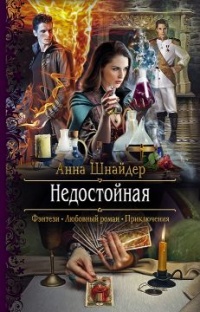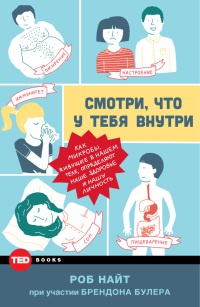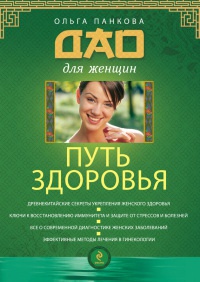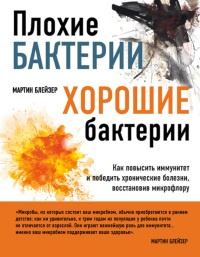Книга Микробы хорошие и плохие. Наше здоровье и выживание в мире бактерий - Джессика Снайдер Сакс
Шрифт:
Интервал:
Закладка:
50 Tsutomu Watanabe et al., “Episome-Mediated Transfer of Drug Resistance in Enterobacteriaceae X”, Journal of Bacteriology 92 (1966), 477–486.
51 Ellen C. Moorhouse, “Transferable Drug Resistance in Enterobacteria Isolated from Urban Infants”, British Medical Journal 2 (1969), 405.
52 K. B. Linton et al., “Antibiotic Resistance and Transmissible R-factors in the Intestinal Coliform Flora of Healthy Adults and Children in an Urban and Rural Community”, Journal of Hygiene 70 (1972), 99-104.
53 D. V. Sompolinsky et al., “Microbiological Changes in the Human Fecal Flora Following the Administration of Tetracyclines and Chloramphenicol”, American Journal ofProctology 18 (1967), 471–478.
54 Stuart Levy et al., “High Frequency of Antimicrobial Resistance in Human Fecal Flora”, Antimicrobial Agents and Chemotherapy 32 (1988), 1801–1806.
55 Интервью, взятое автором у Стюарта Ливи в июне 2006 г.
56 N. B. Shoemaker, H. Hayes, A. A. Salvers, “Evidence for Extensive Resistance Gene Transfer Among Bacteroides spp. and Among Bacteroides and Other Genera in the Human Colon”, Applied and Environmental Microbiology 67 (February 2001), 561–568.
57 Видовое название thetaiotaomicron, которое многие бактериологи считают одним из самых ужасных, представляет собой комбинацию трех греческих букв (тета, йота и омикрон), которые привиделись румынскому бактериологу Арканджело Дистазо в 1912 г., когда он, глядя в микроскоп, увидел нагромождение коротких и длинных палочек, выросших в культуре открытого им вида. См.: A. Distaso, Zentralblatt für Bakteriologie, Parasitenkunde, Infektionskrankheiten, und Hygiene. Abteilung I. 62 (1912) 433468. “О чем история умалчивает, – добавляет Абигайль Сэльерс, – это не было ли придуманное им название вдохновлено посещением ближайшей пивной”. Большинство микробиологов, работающих с этим видом, не без оснований называют его так лишь в своих научных трудах, а во всех остальных случаях используют сокращенное наименование B. theta.
58 Laura McMurry et al., “Triclosan Targets Lipid Synthesis”, Nature 394 (1998), 531-5-32; S. P. Cohen, H. Hachler, S. B. Levy, “Genetic and Functional Analysis of the Multiple Antibiotic Resistant (mar) Locus in Escherichia coli”, Journal of Bacteriology 175 (1993), 14841492; M. C. Moken, L. M. McMurry, S. B. Levy, “Selection of Multiple Antibiotic Resistant (mar) Mutants of Escherichia coli by Using the Disinfectant Pine Oil”, Antimicrobial Agents and Chemotherapy 41 (1997), 2770–2772; L. M. McMurry, M. Oethmger, S. B. Levy, “Overexpression of marA, soxS, or acrAB Produces Resistance to Triclosan in Esherichia coli”, FEMS Microbiology Letters 166 (1998), 305–309.
59 Rolf Halden et al., “Co-occurrence of Triclocarban and Triclosan in U. S. Water Resources”, Environmental Science and Technology 39 (2005), 1420–1426; Jochen Heidler et al., “Partitioning, Persistence and Accumulation in Digested Sludge of the Topical Antiseptic Triclocarban During Wastewater Treatment”, Environmental Science and Technology 40 (2006), 3634–3639.
60 Holli Lancaster et al., “Prevalence and Identification of Tetracycline-Resistant Oral Bacteria in Children Not Receiving Antibiotic Therapy”, FEMS Microbiology Letters 228 (2003), 99-104.
61 Идея, что антибиотики возникли в ходе эволюции, по крайней мере отчасти как сигнальные вещества, принадлежит микробиологу Джулиану Дэвису (Julian Davies) из Университета Британской Колумбии в Ванкувере. Основополагающая работа его лаборатории на эту тему: Been Goh et al., “Transcriptional Modulation of Bacterial Gene Expression by Subinhibitory Concentrations of Antibiotics”, Proceedings of the National Academy of Sciences 99 (2002), 17025-17030.
62 C. G. Marshall et al., “Glycopeptide Antibiotic Resistance Genes in Glycopeptide-Producing Organisms”, Antimicrobial Agents and Chemotherapy 42 (1998), 2215–2220.
63 Химическое название синерцида – хинупристин-дальфопристин, тигацила – тигециклин, кубицина – даптомицин.
64 Телитромицин известен также под фирменным названием “кетек” (Ketek), а линезолид – под названием “зивокс” (Zyvox).
65 Vanessa D’Costa et al., “Sampling the Antibiotic Resistome”, Science 311 (2006), 374–377.
66 “Superbugs Abound in Soil”, www.nature.com / news / 2006/ 060119/full / news060116-10.html.
67 William Laurence, “Wonder Drug Aureomycin Found to Spur Growth 50 Percent”, New York Times, April 10, 1950, 1.
68 Notes on Science, New York Times, May 20, 1950, E9.
69 Animal Health Institute, “Antibiotic Use in Animals Rises in 2004”, пресс-релиз от 27 июня 2005 г.
70 “Hogging It! Estimates of Antimicrobial Abuse in Livestock”, Union of Concerned Scientists, January 2001, executive summary, xiii, www.ucsusa.org/food_and_agriculture/science_and_impacts/impacts _industrial_agriculture / hogging-it-estimates-of.html.
71 Animal Health Institute, “Antibiotic Use in Animals Rises in 2004”, пресс-релиз от 27 июня 2005 г.
72 Animal Health Institute, Active Antibacterial Ingredients Sold byAHI Members, обзор за 2002–2004 гг., 27 июня 2005 г.
73 Amy Chapin et al., “Airborne Multidrug-Resistant Bacteria Isolated from a Concentrated Swine Feeding Operation”, Environmental Health Perspectives 113 (2005), 137; M. P. Schlusener, K. Bester,
“Persistence of Antibiotics Such As Macrolides, Tiamulin and Salinomycin in Soil”, Environmental Pollution 143 (2006), 565–571; J. M. Cha et al., “Rapid Analysis of Trace Levels of Antibiotic Polyether Ionophores in Surface Water by Solid-Phase Extraction”, Journal of Chromatography 1065 (2005), 187–198.
74 Morten Helms et al., “Excess Mortality Associated with Antimicrobial Drug-Resistant Salmonella typhimurium”, Emerging Infectious Diseases 8 (2002), 490–495; J. K. Varma et al., “Antimicrobial Resistance in Salmonella Is Associated with Increased Hospitalizations”, National Antibiotic Resistance Monitoring System 1996–2000, International Conference on Emerging Infectious Diseases, 2002.
75 H. A. Elder et al., “Human Studies to Measure the Effect of Antibiotic Residues”, Veterinary and Human Toxicology 35 (1996), suppl. 1, 31–36.
76 Jeffrey Lejeune, Nicholas Christie, “Microbiological Quality of Ground Beef from Conventionally Reared Cattle and ‘Raised Without Antibiotics’ Label Claims”, Journal of Food Protection, 67 (2004), 1433–1437.
77 M. Meyer et al., “Occurrence of Antibiotics in Surface and Ground Water near Confined Animal Feeding Operations and Waste Water Treatment Plants Using Radioimmunoassay and Liquid Chromatography / Electrospray Mass Spectrometry”, U. S. Geological Survey, Raleigh, N. C.

























